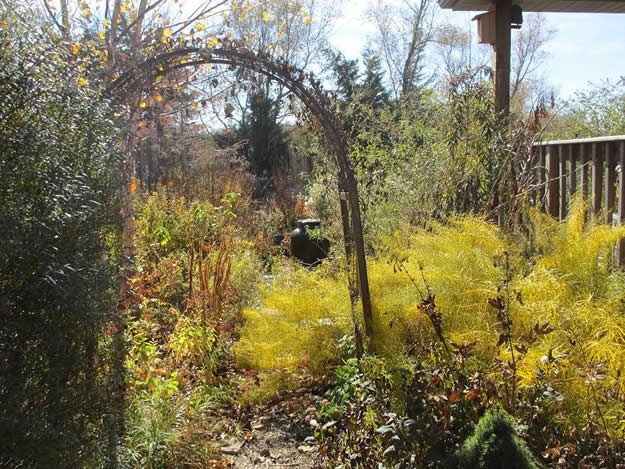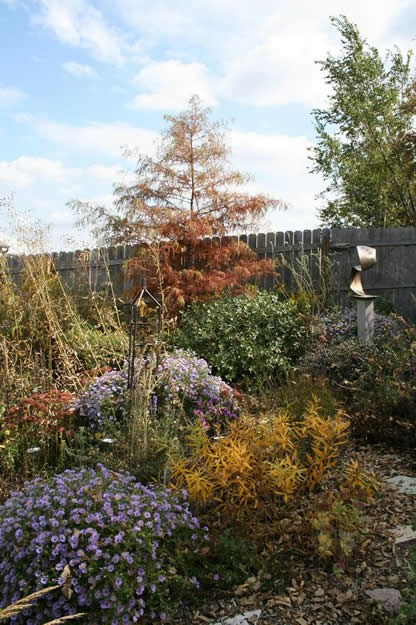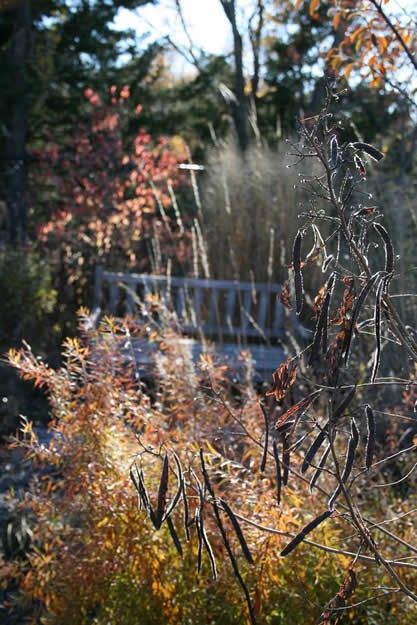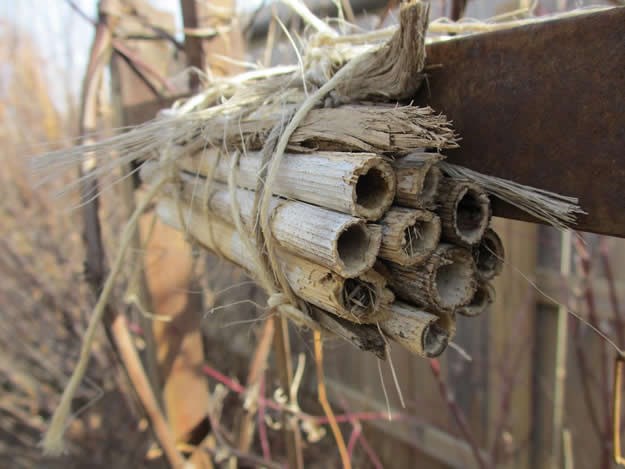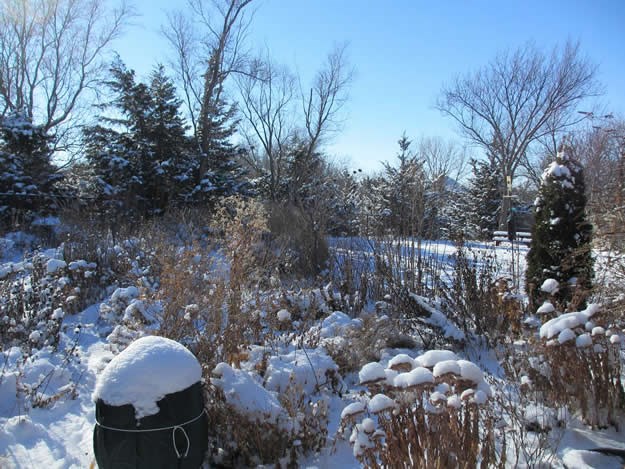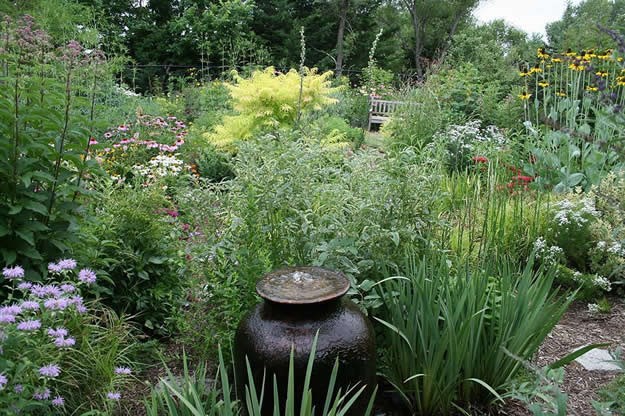
Benjamin Vogt is in love with the Nebraska prairie and laments the loss of the original tallgrass ecosystem with its amazing native plants and wildlife. It is said that the only remnants of this original ecosystem are in pioneer graveyards that were never stripped for farming. In a small, 1,500-square-foot backyard behind his new house, Benjamin’s love for these plants has created a model of good planting design that is low maintenance, ecologically inclined, and fabulous in every season.
Shown on the right is huge Rudbeckia maxima, native to eastern Texas and through the south. “It’s a wet-ground lover that thrives in the low spot of the garden. On the far left are the tall stalks of Joe Pye weed.Wind never knocks it down despite the big leaves.
“I want a modest echo of those plants that once lived here before settlement,” says Vogt of his microcosm of plant communities that once blanketed this region. “I love the aesthetic of a prairie—the look. It’s become a moral issue for me—we’re in a time of climate change and vanishing plant and animal species. If it’s human caused, I might be part of the problem. But at least my garden allows me to remain aware of prairie restoration and conservation.”
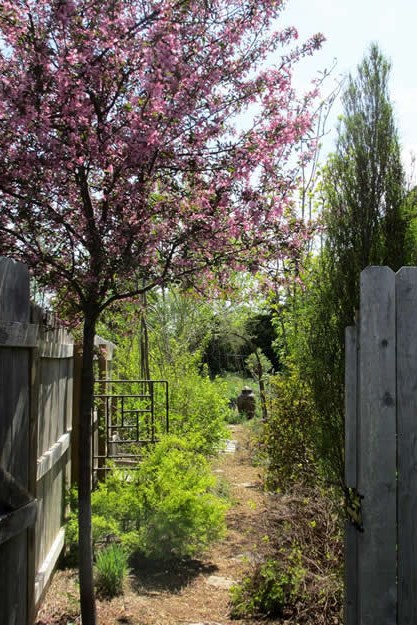
The highlight of Vogt’s sideyard in spring is the crabapple tree as it buds out.
Vogt’s favorite tree, the prairifire crabapple tree grows in the sideyard. “I like its leaf color change through the seasons—from purple in spring to green over summer, then bright orange in the fall. In spring, this one is the only crabapple that lures cedar waxwings. They won’t touch the others. Crabapple fruit needs to go through freeze and thaw before it’s palatable to birds.”
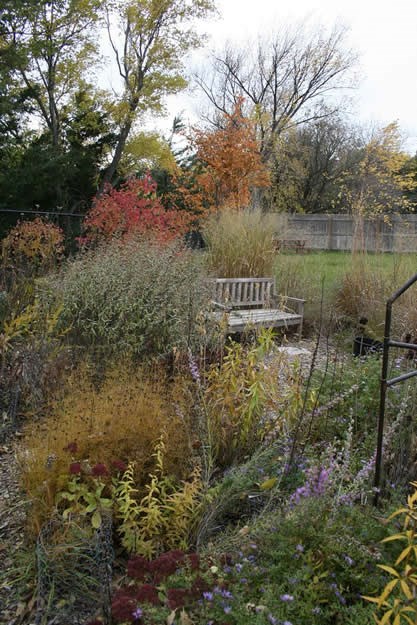
Vogt’s garden, which he began in 2007, is full of seasonal interest.
In July, 2007, Vogt moved into his new house, where the topsoil was scraped away to grade the small backyard. “I found these native prairie plants prefer leaner soils. The perennials produce very deep roots to reach what they need, so there was no need to do much soil preparation on top.” This demonstrates the benefits of using locally native plants that are well adapted to regional soils and weather. “These days I’m tired, so I don’t want to do much in the garden. We all need to learn to let go of the idea that a garden is perfect and accept its natural character.”
